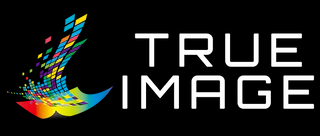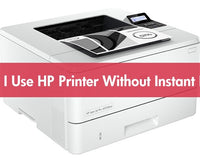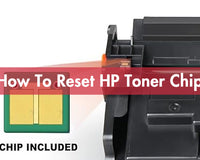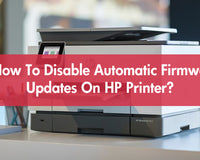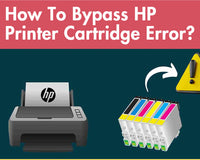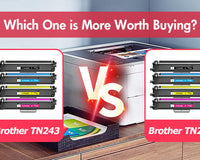Digital printing—a technology that's redefining the art of reproduction. In an era where precision and speed are paramount, digital printing stands as a testament to innovation. This blog posed by True Image will guide you through the intricacies of digital printing, revealing how it transforms digital files into high-quality prints with unparalleled efficiency.
What is Digital Printing?
At the beginning of the article, we will have a preliminary understanding of digital printing from two aspects: definition and application.
Definition:
Digital printing is a printing method that utilizes electronic data to produce printed materials directly from a digital file. This process bypasses the traditional steps of film, plates, and other physical intermediaries, streamlining the production workflow and reducing costs and lead times. The core of digital printing lies in its full digital workflow, from the computer to the digital printer, which then applies CMYK ink directly onto the substrate, often facilitated by Computer-to-Plate (CTP) technology.
| 📚️ Related Blogs That You Will Be Interested In: DTF VS DTG: Which Printing Method is Better? |
Applications:
Digital Printing has revolutionized the printing industry by offering unparalleled versatility and efficiency across various sectors. Its applications span from personalized materials to high-volume packaging production, each tailored to meet the unique needs of modern businesses.
- 🛍️ Marketing Personalization: At the forefront of personalized marketing, digital printing enables businesses to create custom invitations, brochures, and promotional materials with individual details for enhanced engagement.
- 🛍️ Short-Run & On-Demand Printing: This high-tech printing offers a cost-effective alternative to traditional offset printing for low-volume jobs with quick turnaround times, suitable for small businesses and startups.
- 🛍️ Variable Data Printing (VDP): It also facilitates the production of personalized documents with variable content for targeted marketing campaigns, such as customer statements, direct mail pieces, and promotional emails.
- 🛍️ Packaging & Labeling: From custom labels to fully personalized packaging designs, digital printing allows for rapid production of high-quality materials that stand out on store shelves and enhance brand recognition.
- 🛍️ Publishing & Book Printing: It enables cost-effective production of small-run books, manuals, and other publications, making publishing accessible to a wider range of creators.
How Does Digital Printing Work?
Knowing the work process of this cutting-edge printing technology is incredibly insightful and empowering for anyone involved in the graphic design, marketing, or printing industries. We take the HP Indigo printers with HP ink or toner cartridges to provide a comprehensive understanding of how digital files are transformed into visually stunning prints.
Step 1: Digital File Creation and Preparation
The process begins with the preparation of the digital file, which can be a text document, a photograph, or any graphic design. This file is typically created or formatted using software like Adobe, InDesign, Photoshop, or Illustrator. The file is then saved in a format compatible with the digital printer, such as PDF, JPEG, or TIFF.
Step 2: Submission to the Digital Printer
The processed digital file is then submitted to a digital printer. Digital printers can be inkjet, laser, or use other specialized technologies depending on the requirements of the job.
Step 3: Imaging Process
During the imaging process, the digital printer precisely controls the placement of ink or toner to form the desired image.
- Inkjet Printing: In inkjet printers, tiny nozzles spray microscopic droplets of ink onto the paper or substrate. The ink can be either dye-based or pigment-based.
- Laser Printing: Laser printers use a laser beam to produce an electrostatic image on a drum. The drum then attracts powdered toner, which is transferred to the paper and fused using heat.
Step 4: Drying and Finishing
After the ink or toner cartridges are applied, the print may need to be dried or cured. It can be done through air drying, heat, or UV light, depending on the type of ink used. The printed material might also go through finishing processes like cutting, folding, binding, or laminating to achieve the desired final product.
Step 5: Quality Control
The final step involves checking the printed output for any defects or color inconsistencies. If everything meets the required standards, the prints are then ready for distribution or further use.
Advantages That Digital Printing Will Bring
- 👍 Cost-Efficiency: Ideal for small print runs, digital printing eliminates the need for expensive plates and setup costs, making it an economical choice for short runs and on-demand projects.
- 👍 Quick Turnaround: With minimal setup requirements, digital printing provides rapid production times, enabling faster delivery and the ability to meet tight deadlines.
- 👍 Support for Customization: Variable data printing allows for easy customization, enabling the creation of personalized materials tailored to specific audiences and enhancing marketing effectiveness.
- 👍 High-Quality Output: Advances in digital technology ensure sharp, vibrant, and consistent print quality, suitable for a variety of applications from marketing materials to high-end brochures.
- 👍 Reduced Waste: Digital printing produces less waste by avoiding overproduction and setup sheets, contributing to more sustainable practices and reducing environmental impact.
- 👍 Print Versatility: Capable of printing on various media types, digital printing supports a wide range of projects, from traditional paper to unconventional materials like fabrics and metals.
- 👍 Ease of Use: Simplified processes and integration with digital workflows make digital printing accessible and convenient, reducing the need for extensive technical expertise.
Disadvantages Of Digital Printing That You Should Consider
Digital printing, while offering numerous advantages such as speed, flexibility, and lower setup costs, also has some disadvantages that should be noticed.
- 👎 High Cost per Unit: Digital printing can be more expensive per unit compared to offset printing, especially for large print runs. The cost per page tends to decrease with offset printing as the quantity increases, whereas digital printing costs remain relatively constant per page.
- 👎 Details Limitations: While digital printing has significantly improved in terms of quality, it may need to match the consistency and high-end color reproduction capabilities of offset printing, especially for projects requiring a large number of copies.
- 👎 Material Limitations: Digital printers have limitations in terms of the types of materials they can print on. Certain substrates, such as certain types of plastics or metals, may not be suitable for digital printing, limiting its versatility.
Conclusion
As we continue to embrace the digital age, its applications will only expand, revolutionizing the way we produce and consume printed materials. However, the traditional printing still holds an important place in the industry. True Image has been in the field of providing compatible printer consumables for well-known brands like HP, Brother, Canon and more for many years. If you are also looking for affordable and premium cartridges for your printer, shop here to improve your printing experience!
